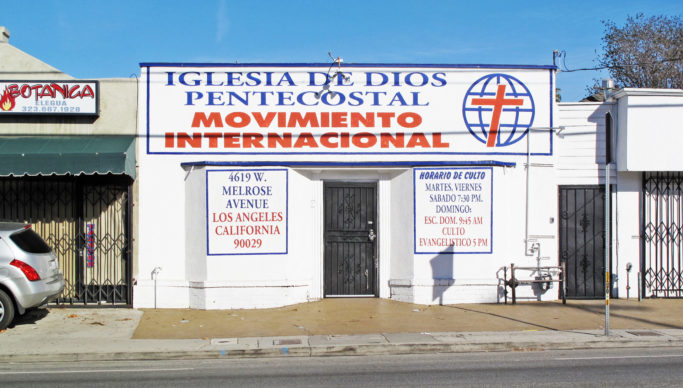
Bucking the Trend, Latino Majority Congregations Are Prospering in Numbers, but Not in Finances
- By Gladys McBride --
- 20 Dec 2023 --
As the number of vacant pews increases in America’s houses of worship, one religious demographic is defying the trend: Latino majority congregations.
According to a new Hartford Institute for Religion Research report, congregations of over 50 percent Latino have a median of 80 weekly worship attendees, compared to non-Latino congregations, with a median of 65.
Another contrast is that while other congregations are aging, Latino attendees are “getting younger, with the percentages of children and young adults through age 34 outpacing those of other congregations.
As Rev. Kristina Lizady-Hajbi, a sociologist of religion at Iliff School of Theology, says, “They tend to be larger congregations and tend to have younger members and this is, I think, similar to the Latino population as a whole in the United States.”
(Latinos, who make up nearly one-fifth of America’s population, increased by 23 percent in the decade from 2010 to 2020, according to the U.S. Census.)
The crisis facing Latino majority congregations, then, is not one of faith but of finances. While other congregations sport a giving average of $2,000 per capita, Latino faith communities average $1,250.
The breakpoint apparently was the COVID-19 pandemic and the corresponding lockdowns. Before the pandemic, 62.7 percent of Latino faith communities rated their financial health as “excellent” or “good.” After the pandemic, that percentage plummeted to 26.1 percent. Before the pandemic, those describing “some” or “serious” difficulty financially was a mere 2.4 percent. After the pandemic, an exponential increase to 41 percent.
Even the “tight, but we manage” category changed markedly, from 34.7 pre- to 20.4 post-pandemic.
Rev. Lizardy-Hajbi, wrote in the report that “This trend is mirrored across all U.S. congregations, but it is reflected more drastically within Latino faith communities.” Her suggestion: “How denominations and other religious bodies are addressing the financial challenges facing Latino congregations most impacted by COVID-19 should be a conversation of priority.”
Right now, more than a third of the shepherds of the majority Latino flocks often moonlight, needing extra employment beyond the pulpit to help make ends meet. Some work part-time leading their congregations and one-fifth, overall, deliver their pastoral work gratis.
An additional factor in the tightening belts of the Latino congregations is that just 34.7 percent own their facilities, as compared to the nearly twice that percentage, 64.8 percent, of non-Latino majority congregations who do own their meeting places.
When you own rather than rent, your stable base in the community becomes that much more stable, and, as Lizardy-Hajbi points out, allows that congregation to better assume the role of a community hub.
This one factor of owning versus renting could prove crucial for Latino majority faith communities, as over half put “a lot” of emphasis on community service, as compared to non-Latino majority congregations of which just a third get deeply involved in their neighborhoods.
Are Latino-majority congregations up for the challenge of increasing worshipers and dwindling dollars? Time will tell. A major strength of the Latino majority faithful—and one that cannot be ignored in facing that challenge is that, according to Rev. Lizardy-Hajbi, “Latino congregations, by and large, constitute a more vibrant aspect of congregational life in the United States, particularly Christian congregational life.”



















